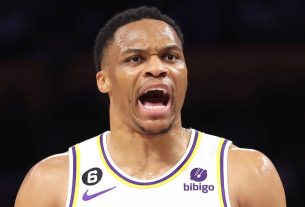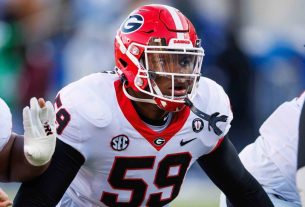
The whole Carlos Correa situation happened so fast it almost felt like a fever dream, also because he signed with the New York Mets while most of us — especially on the West Coast — were asleep. Correa went from signing with the San Francisco Giants, to having his introductory press conference postponed due to a reported issue with his physical, to a New York Met all within the course of the week. Giants’ fans are obviously upset. They thought they were landing their next franchise shortstop who would lock down the 6-spot for more than a decade. They didn’t. But nobody really knows why. Sure, there were reports that results from Correa’s physical had something to do with it, but those reports haven’t been confirmed. It also seems fishy that the Giants would have such a massive problem with Correa’s medical results, but the Mets would be willing to gobble him up immediately afterward for more than $300 million.
I spoke with the California Sports Institute’s Chris Munford, a consultant for professional franchises on matters of strength and conditioning plus performance, to understand a little more about what could’ve happened. The Giants apparently backed out of the deal due to an unforeseen problem with Correa’s medical examinations. However, prior to that issue, San Fran was willing to give Correa $350 million over 13 years. The first question I needed answered was how bad Correa’s physical results had to have been in order for the organization to walk away from a franchise shortstop.
“Based on his injury history, the only thing that would kind of jump out I could imagine would be his lower back issues,” Munford told Deadspin. “If you look at [Correa’s] other things — broken fingers, even the broken fibula — they’re really not a big deal. In terms of what we know, that lower back would be the only thing where I could imagine there being an issue.” However, Giants’ insider Susan Slusser has come forward claiming that there was no issue with Correa’s back.
Furthermore, other reports have indicated that although doctors cleared Correa of any issues. The Giants apparently disagreed with their assessment though. What could this disagreement have possibly been?
G/O Media may get a commission
“If that is true that the Giants’ camp came in after the medicals and had an issue with the results, then it’s highly likely that there’s more going on aside from the medical situation,” Munford admitted. He continued, “An executive might look at the deal though and notice that [Correa] has gotten hurt a lot, not severely, but year-in, year-over, he’s gotten hurt. They’re giving him $350 million. My sense is that they were probably looking for some other guarantees to keep their risk low.”
Correa has had a series of small injuries over the last several years. Munford goes on to explain that there was likely a clause in Correa’s contract that would’ve hurt his salary if he didn’t reach certain playtime figures in each season. Given Correa’s history, having only played more than 140 games in a season twice in his career, it’s likely he and his agent Scott Boras weren’t willing to agree to those conditions. Meanwhile, the Mets likely have no such conditions in their contract with Correa.
Even though the Giants may have had a problem with the medical results, “it’s not at all surprising that the Mets don’t,” says Munford. “There’s no standardized test for these things. That doesn’t exist, so if a team really wants someone to pass the physical, they will. It doesn’t surprise me in the least that one team would approve somebody’s medical and another team doesn’t.”
We are still unaware of what really pushed the Giants away from Correa or vice versa. The consensus seems to be that it had something to do with Correa’s medical history. Some reports have indicated that Correa’s broken fibula from 2014 played a factor, but it’s safe to say that the Giants — and definitely everyone involved with Correa — would’ve known about that injury long before the physical was ever conducted. Munford has even undergone fibula surgery before. He told Deadspin that there’s practically a “zero percent chance [the fibula] is the reason. It doesn’t affect explosiveness or stability at all.” It seems likely that there were other motives at play, but blaming a medical issue would be an easy out for the Giants to hide behind.
“If you look at the responses to all this from Instagram or Twitter, they’re trashing the executive suite out there in San Francisco for not signing them regardless. Fans are up in arms,” Munford explained. “Public perception is key. If they just turn around and say ‘Yeah, we’re not signing him because we think it’s too much money now,’ they’d really be opening up a bad can of worms. If they say ‘Well, we’re not signing because he gets hurt a lot,’ or ‘There was something wrong with the medical,’ that softens the blow.” Munford wants to make it clear, he is not claiming that there was something else involved, but rather that it would make sense if there was. Claiming medical issues also explains the lack of information to become public since the Correa dilemma happened.
“A team has the right to provide whatever they want, and with Collective Bargaining Agreements, the team can only say so much about their physicals. If you say ‘medical,’ you automatically give yourself the shield to not say anything more, because you legally can’t,” says Munford. With so little information known about this situation, the Giants claiming the deal fell through due to medical reasons could be true, but it’s perhaps just as likely that they don’t want certain aspects of the deal becoming public knowledge at this moment.
Details are certainly fishy surrounding Correa, and until more information becomes public, we can’t possibly know what the Giants’ true intentions were. That said, the current pool of information isn’t sitting right with me, and I wouldn’t be shocked if contrasting information becomes public very soon.


